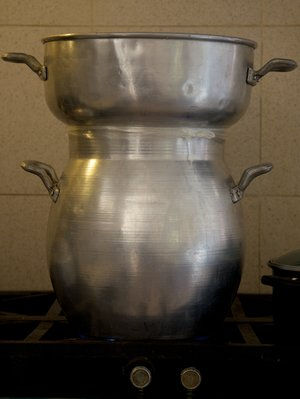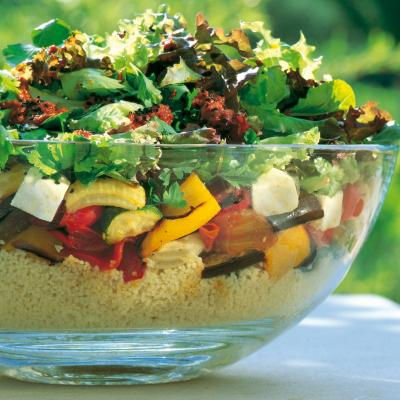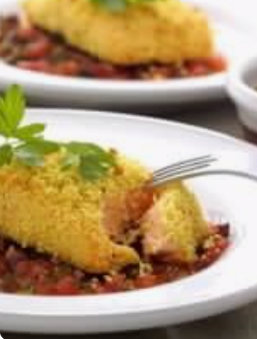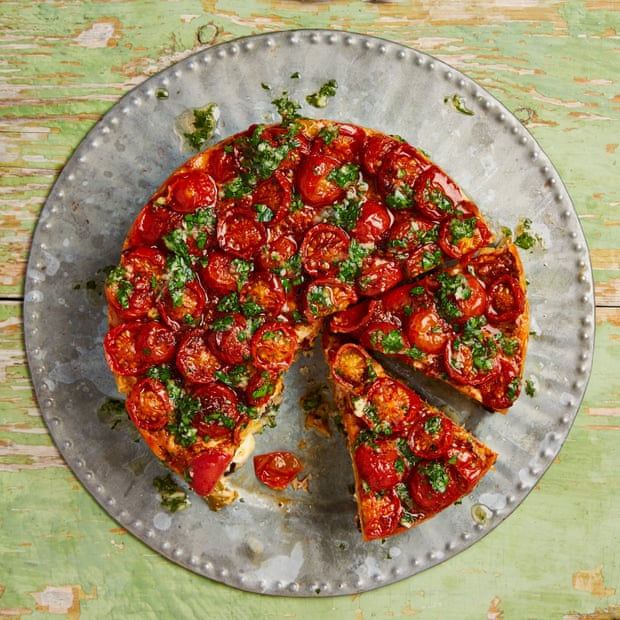Couscous
- rosemarydearman1
- Oct 16, 2019
- 5 min read

"One common complaint is that it lacks any real flavour. In fact, as with pasta, good couscous does have a delicate, wheaty taste of its own that plays its part in a dish. But couscous is classically used as a bed for spicy stews and tagines, adorned with pungent pastes such as harissa - its unassertive, soothing nature is precisely the point." Tim Maddams - River Cottage A-Z
This is how we come across couscous these days. Instant couscous in a packet. You can also get it with various flavours. For this couscous has already been cooked and then dried. We just have to add liquid and voilà couscous. Much quicker than pasta or rice or potatoes. I agree that it has a subtle sort of wheaty taste, but for me it's the texture that attracts.
'Real' couscous though is made by hand in a somewhat laborious process whereby semolina grains are rolled in flour and sieved to achieve the right size.

All of the descriptions of this process that I found said that it was sieved so that they could retrieve the pieces that were too small and rub them together again. But when you look at the pictures on the net you see a massive pile of couscous below the sieve. So I think they must have it wrong. Surely the holes in the sieve are what make it a uniform size, whatever that may be. For the size differs according to where you live.
As I said, it's a complicated process. Now who on earth thought of doing it? It's one of this things that doesn't seem quite natural. It certainly dates back a long way - the 7th century, when it may have been made from barley. It comes from the Maghreb region of Africa - the north western area bordering the Mediterranean, although there are variations elsewhere - Sicily, which was occupied by the Arabs of course, and Israel which has a lot of North African Jews. But I think the Arabs of the Middle East also have their own version which is larger.
It is the food of the Berbers of the Mahgreb:
"where men have shaved skulls, wear burnouse, and consume of couscous."
You may have thought it was just Moroccan because we tend to hear more about Moroccan food than Algerian, Tunisian, Mauritanian or Libyan. Personally I first came across couscous in France, which, of course has many immigrants from her former North African territories and you will see couscous on the menu, not only in North African kind of restaurants, but sometimes in French ones too. And the supermarkets have lots of couscous of course. I don't actually remember being served couscous ever, but I do remember being very aware of it.
Anyway it seems that the Algerians decided to try and get UNESCO to recognise couscous - specifically from Algeria - as one of UNESCO's intangible cultural assets. Instant anger from Morocco, followed by Tunisia, and Mauritania. Apparently Morocco and Algeria in particular are sworn enemies, so much so that the border between them is closed. However, somehow or other - I think it was through the Tunisians - an agreement was made to make a joint submission to UNESCO. Libya cannot because it doesn't recognise the Intangible Cultural Assets thing.
"What it signals is a growing willingness of leaders to recognize the Maghreb's shared culture, despite political boundaries and conflict." Hakim Malka - UNESCO
"it is fitting that the first [cultutal asset] explored together is food — specifically couscous. The spirit of sociability and conviviality characterizes this dish of sharing par excellence. It translates the bond that strengthens friendships and alliances. It means links, reconciliations, sharing and solidarity." Ghazi Gherari - Tunisian ambassador to UNESCO

And yes it is a shared dish. Traditionally it is made in large quantities and served on huge platters to be shared amongst family and friends. The pictures shown here are from Robert Carrier's A Taste of Morocco, published in 1987.

'Real' couscous is steamed over the stew or tagine that it will eventually accompany. The stew is cooked in a large rounded saucepan kind of pot and the couscous is steamed on top in a kind of sieve or colander, near the end of the cooking.

I don't know whether this is still how it is cooked in its homeland, but here, we just open our packet, pour over our liquid and go for it.
And we do so many things with it that are not just the carbohydrate component of a meal. it's a prime example of a traditional food that has become globalised and in the process has evolved. Whether this is a good or a bad thing is doubtless the subject of many discussions from food authorities. We ordinary folk just rejoice that we have something else that is new and different to play with. I found a whole lot of ways to use couscous, so here are some of them, beginning with the very delicious salad by Delia that I made the other day for my book group ladies, and which inspired this post. I'm hoping David will finish up the leftovers tomorrow when I'm fasting, because, of course, I made too much. But I have to say for ladies with normally small appetites, they virtually all had seconds.

It's called Roasted vegetable couscous salad with a harissa style dressing. And it wasn't at all mushy - Yotam Ottolenghi seems to think that all couscous salads end up mushy - except his own of course.
Delia also used couscous quite differently in a salmon dish -

I think the picture at right is of the dish - there's always a blogger who makes most of the dishes in cookbooks these days.
Nigel Slater does almost the same thing with chicken, although he bakes his chicken - Chicken breasts with baked couscous. The couscous is baked underneath the chicken with the juices of the chicken soaking down into it. I could not find a picture of this one though although it sounded very tempting - lemon and almonds being the main flavours I think. The rest are: Spanish style eggs with couscous, (from a Guardian reader - the couscous is cooked as a base for the eggs here.) Couscous, beluga lentils, and pumpkin patties with sage-pumpkin seed pesto (from another Guardian reader - there was a competition for couscous recipes.) The other two are from Donna Hay who actually has heaps of couscous recipes, but these two were the most unusual: Chicken, couscous and bacon meatloaves and Silverbeet and artichoke Israeli couscous risotto.

Yotam Ottolenghi, of course had some recipes, but I was not particular smitten with any of them. However, in one of his articles I saw this amazingly tempting dish - nothing to do with couscous but I've just got to make it some time soon.




















Comments